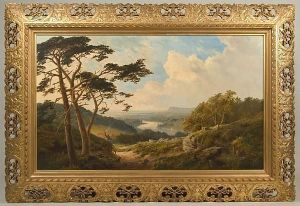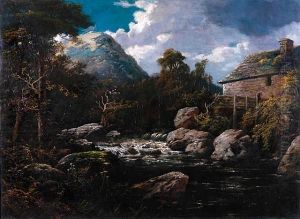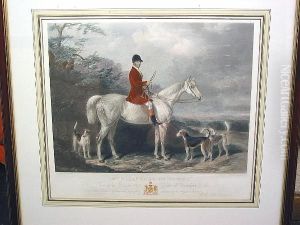Edward Hacker Paintings
Edward Hacker was an English engraver and lithographer whose career spanned much of the 19th century, a period characterized by significant transformations in the art and publishing worlds. Born in 1812, Hacker found himself amidst the burgeoning Romantic movement, which would come to influence much of his work. Though detailed records of his early life and artistic training are scarce, it is evident from his prolific output that Hacker was both skilled and versatile in his craft.
Hacker's work primarily involved engraving and lithography, two methods of printmaking that were central to the dissemination of visual culture during his time. Engraving, a technique that involves incising a design onto a hard surface, and lithography, a method based on the immiscibility of oil and water, allowed for the mass production of images. These techniques were especially crucial before the advent of photographic processes in the widespread reproduction of works of art, illustrations for books, magazines, and newspapers, as well as the creation of standalone prints.
Throughout his career, Edward Hacker collaborated with many prominent artists of the day. He translated numerous paintings and drawings into engravings and lithographs, thereby playing a key role in the Victorian era's visual culture. His works include portraits, landscapes, and scenes from everyday life, reflecting the era's varied artistic interests. Through his engravings, Hacker helped to make art accessible to the burgeoning middle class, contributing to the democratization of art access during the 19th century.
Despite the significance of his contributions, Hacker's name is not as widely recognized today as some of his contemporaries. This oversight may be attributed to the nature of his work; engravers and lithographers often remained in the background, with the original artists receiving most of the acclaim. Nevertheless, Edward Hacker's technical skill and artistic sensitivity are evident in the precision and beauty of his prints, which continue to be studied and appreciated by art historians and collectors.
Edward Hacker passed away in 1905, leaving behind a legacy encapsulated in the myriad of prints that bear his name. His work remains an important part of the history of printmaking, offering insight into the artistic, cultural, and technological developments of the 19th century. Through his engravings and lithographs, Hacker contributed to the rich tapestry of Victorian visual culture, ensuring his place in the annals of art history.


